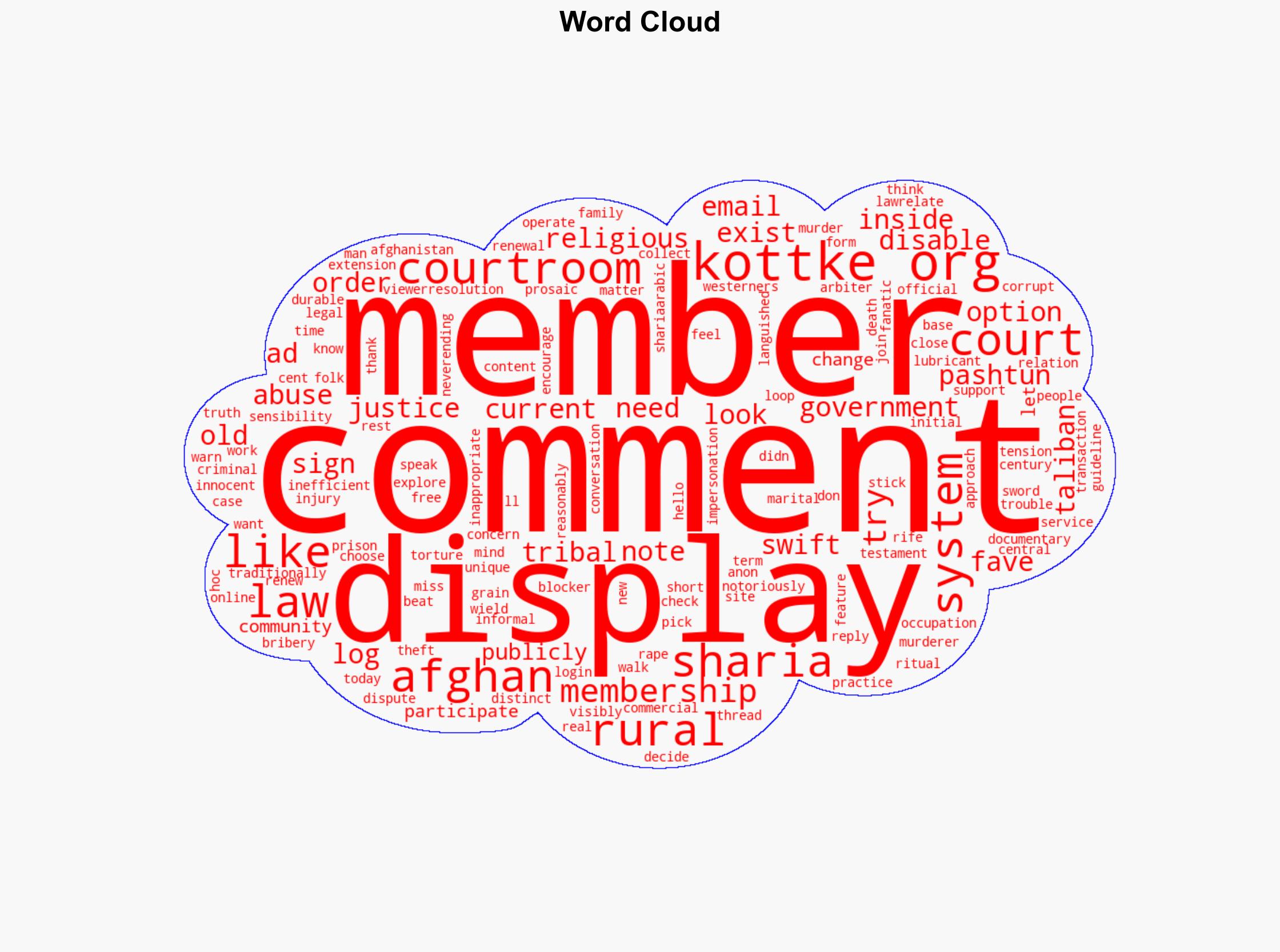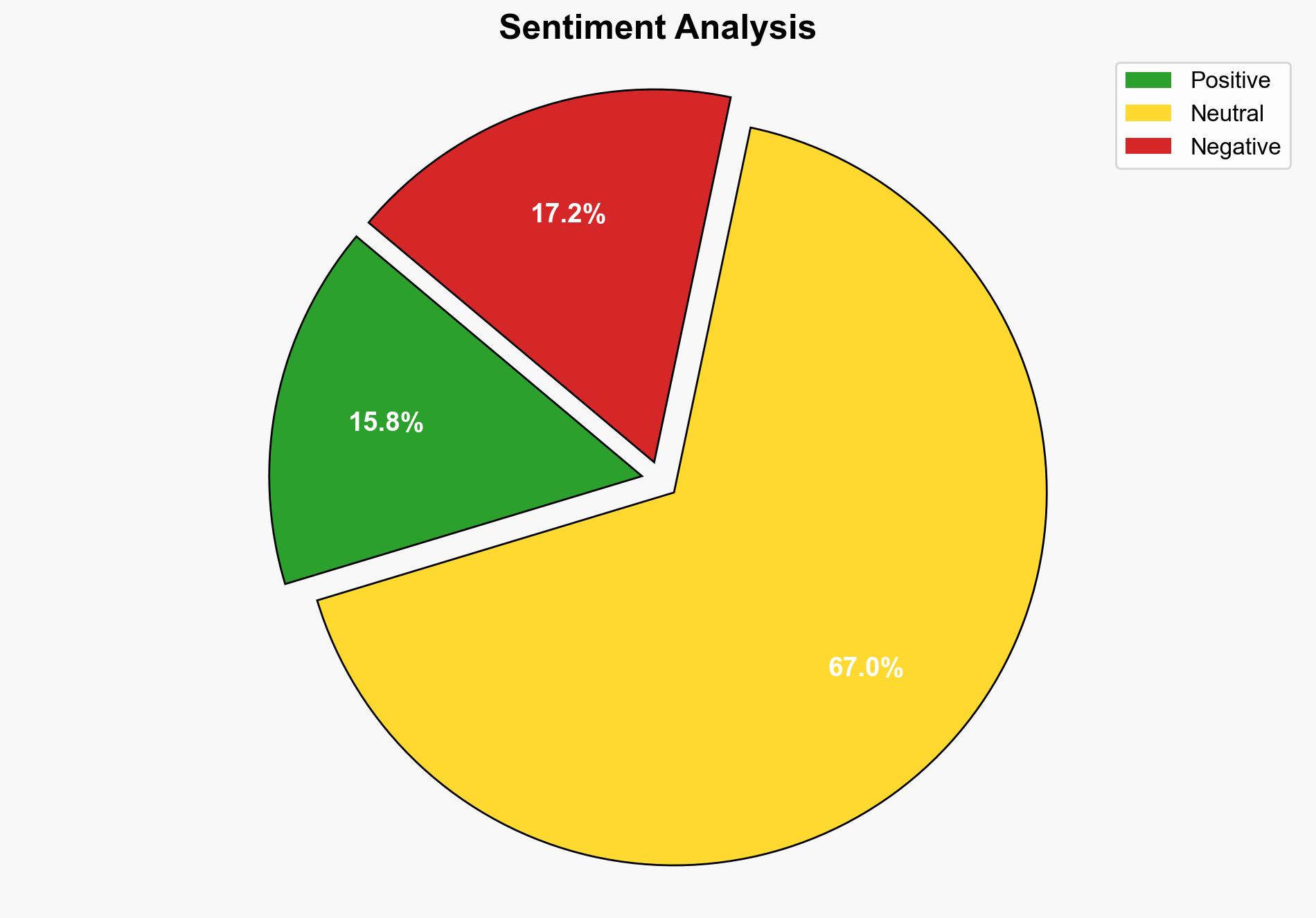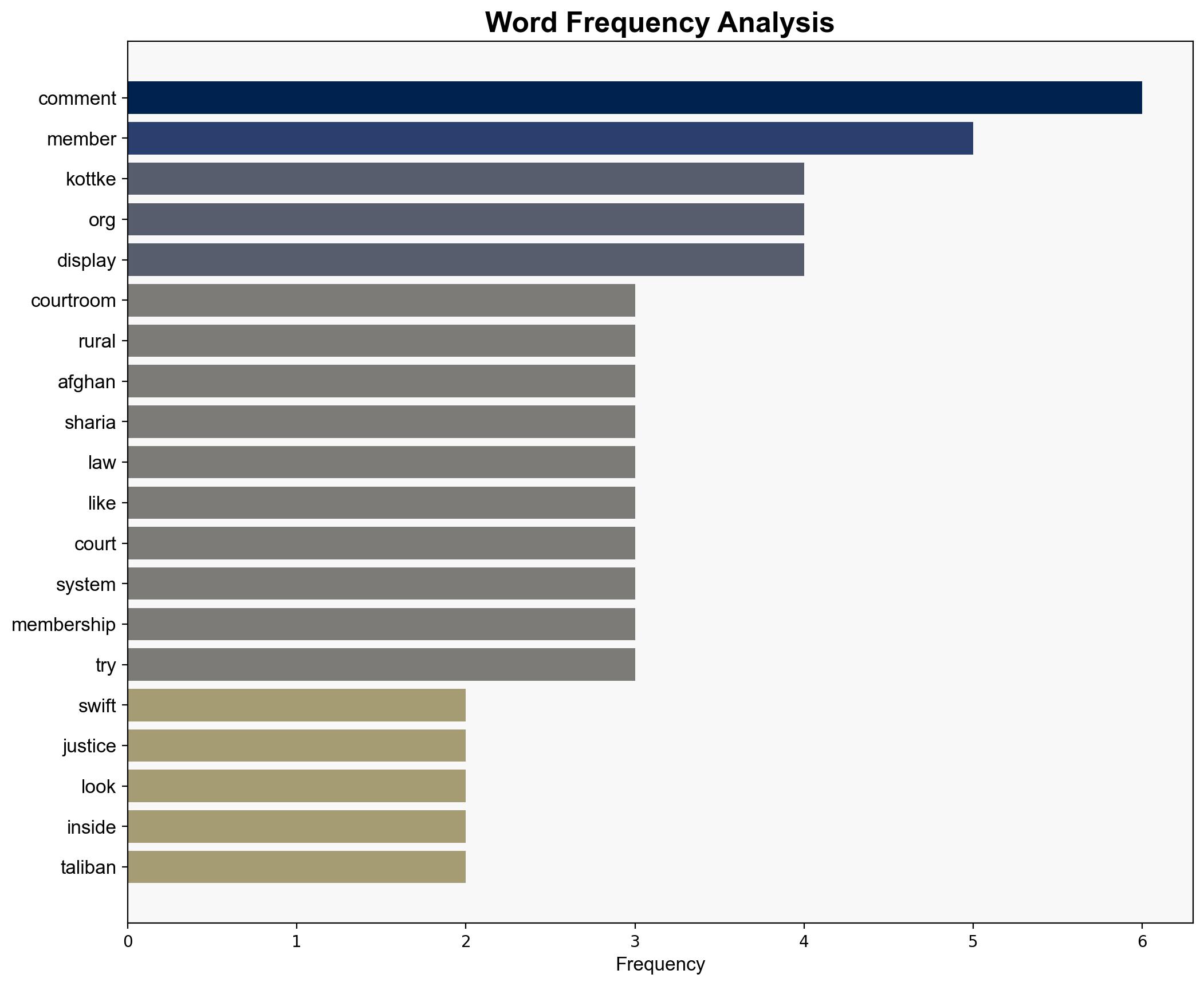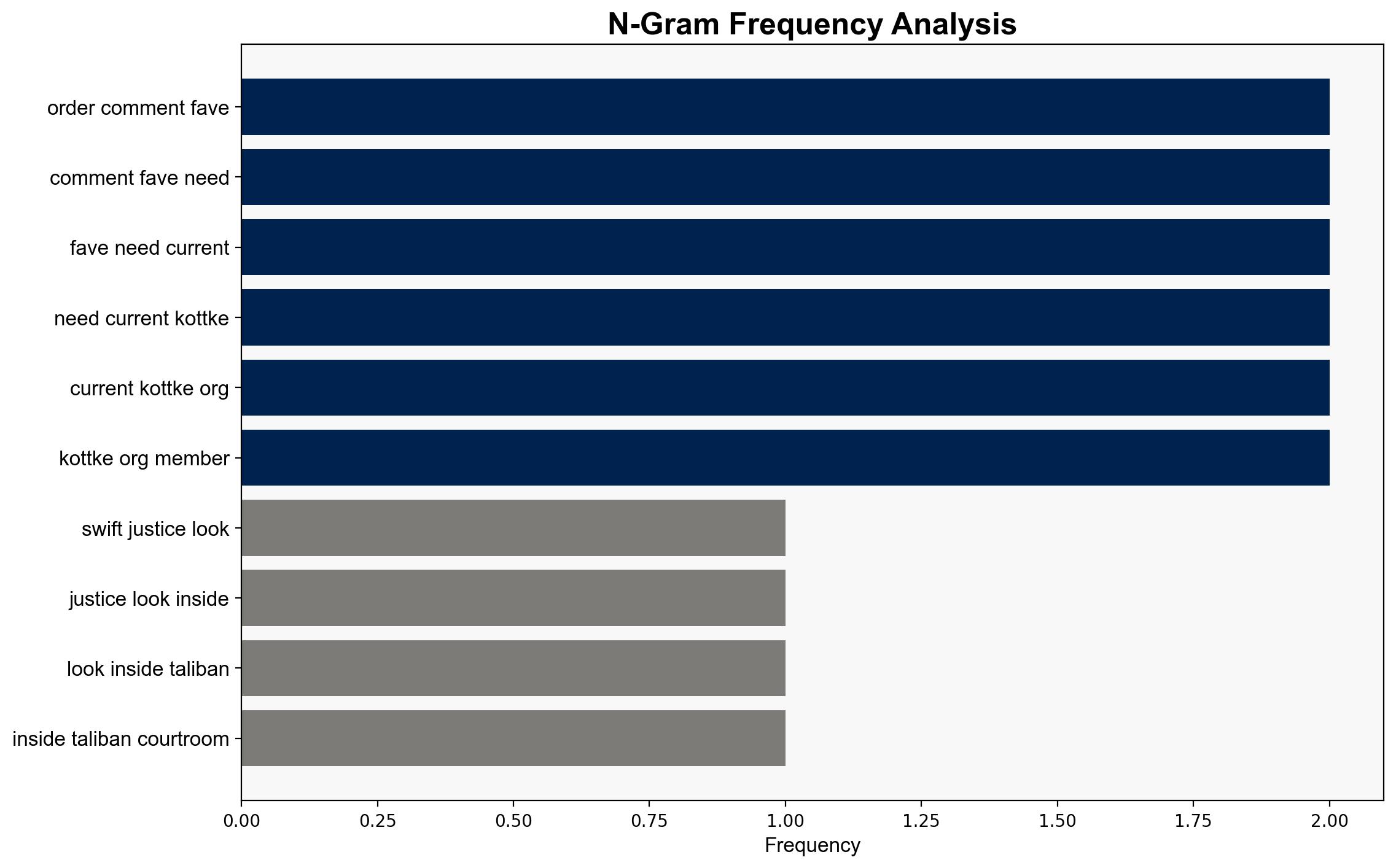Swift Justice A Look Inside a Taliban Courtroom – kottke.org
Published on: 2025-10-03
Intelligence Report: Swift Justice A Look Inside a Taliban Courtroom – kottke.org
1. BLUF (Bottom Line Up Front)
The analysis presents two competing hypotheses regarding the operation of Taliban courtrooms in rural Afghanistan. The first hypothesis suggests that the Taliban’s judicial system is a pragmatic response to the inefficiencies and corruption of the official Afghan courts. The second posits that the Taliban courts are primarily a tool for enforcing ideological control. The evidence more strongly supports the first hypothesis, given the historical context and local acceptance of tribal justice systems. Confidence level: Moderate. Recommended action: Monitor developments in Taliban-controlled regions to assess shifts in judicial practices and their socio-political impacts.
2. Competing Hypotheses
1. **Hypothesis 1**: The Taliban’s judicial system is primarily a pragmatic solution to the inefficiencies and corruption of the official Afghan courts. This system is rooted in local traditions and provides a semblance of justice in areas where official systems have failed.
2. **Hypothesis 2**: The Taliban courts are primarily a mechanism for enforcing ideological control and instilling fear, using religious law as a tool to consolidate power and suppress dissent.
Using ACH 2.0, the first hypothesis is better supported by the historical reliance on tribal justice systems in rural Afghanistan and the documented inefficiencies of the official courts. The second hypothesis is less supported due to the lack of direct evidence linking courtroom practices to broader ideological enforcement.
3. Key Assumptions and Red Flags
– **Assumptions**:
– Hypothesis 1 assumes local populations prefer tribal justice over corrupt official systems.
– Hypothesis 2 assumes a direct link between courtroom practices and broader ideological enforcement.
– **Red Flags**:
– Lack of direct evidence on how courtroom decisions are used for ideological control.
– Potential bias in reporting due to cultural misunderstandings of Sharia law.
4. Implications and Strategic Risks
The persistence of Taliban courts could undermine efforts to establish a unified legal system in Afghanistan, potentially leading to increased regional autonomy and fragmentation. If these courts are indeed used for ideological control, there could be a rise in human rights abuses and increased resistance from local populations. This could escalate into broader conflicts and destabilize the region further.
5. Recommendations and Outlook
- Engage with local leaders to understand the community’s perspective on justice and identify potential allies for reforming the legal system.
- Monitor Taliban-controlled regions for shifts in judicial practices and their socio-political impacts.
- Scenario-based projections:
- Best: Integration of tribal justice with national legal reforms, reducing Taliban influence.
- Worst: Increased ideological enforcement leading to widespread human rights abuses.
- Most Likely: Continued reliance on Taliban courts in rural areas with sporadic national legal reforms.
6. Key Individuals and Entities
No specific individuals are mentioned in the source text. Focus remains on the Taliban as an entity and its judicial practices.
7. Thematic Tags
national security threats, regional focus, counter-terrorism, judicial reform





